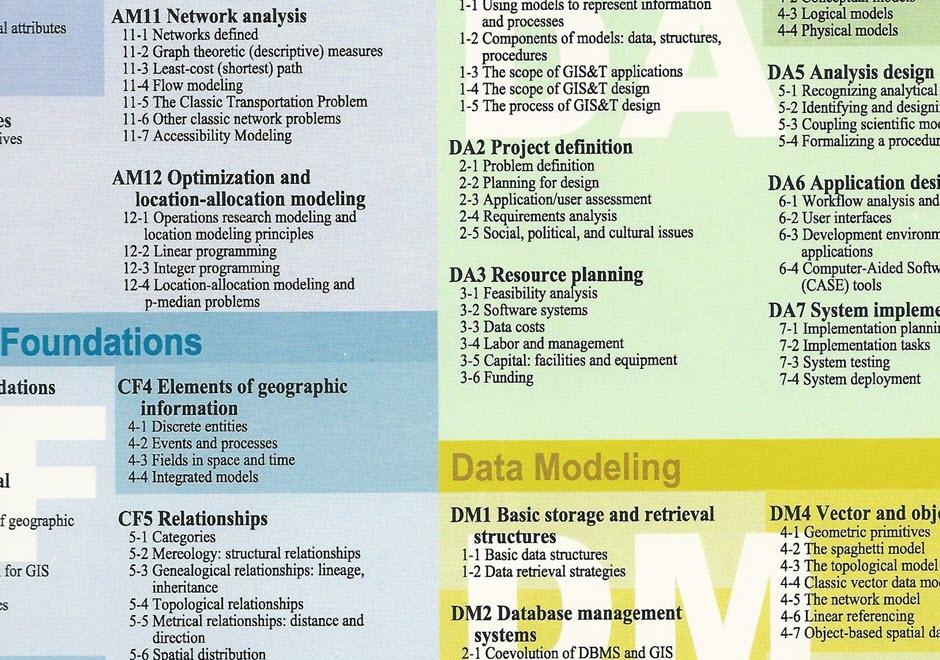CF5-6 - Spatial distribution

- Find spatial patterns in the distribution of geographic phenomena using geographic visualization and other techniques
- Hypothesize the causes of a pattern in the spatial distribution of a phenomenon
- Differentiate among distributions in space, time, and attribute
- Identify influences of scale on the appearance of distributions
- Employ techniques for visualizing, describing, and analyzing distributions in space, time, and attribute
- Discuss the causal relationship between spatial processes and spatial patterns, including the possible problems in determining causality


OI5-4 - Spatial data sharing among organizations